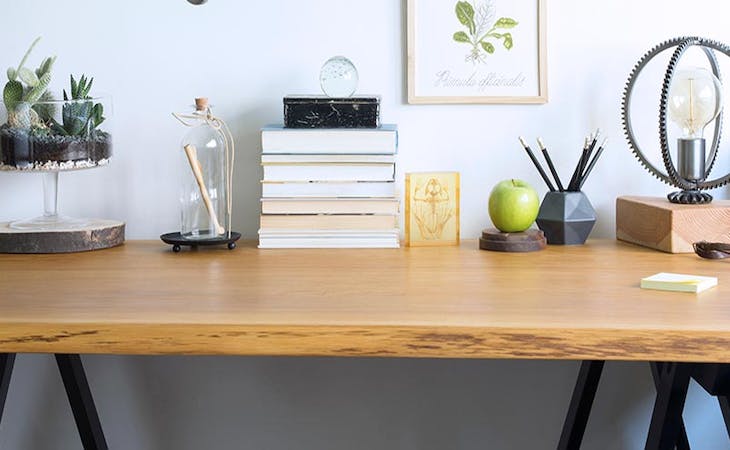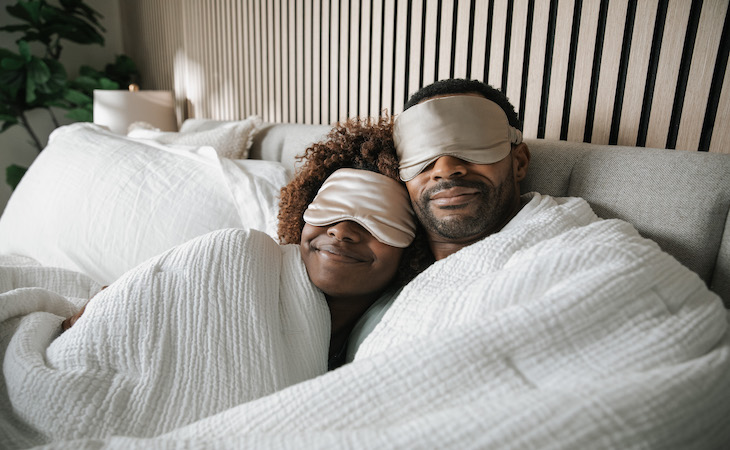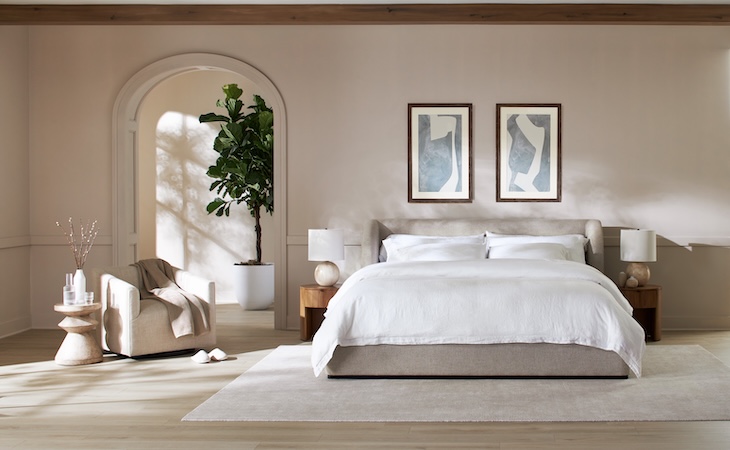In an ideal world, nothing mars the serenity of the place where you sleep. Clothes hang quietly in the closet, laundry nestles in the hamper, and the nightstand holds little more than a reading lamp, a bouquet of fresh lavender, and a coma-inducing copy of Moby-Dick.
In the real world, bedrooms, like many of their owners, often have to multitask. If you do not have the luxury of a home office down the hall, you are looking at what interior designers call a “bedroom office”—a resting place for your computer, printer, and unpaid bills as well as your own weary head. Here’s how to make it work without losing sleep.
Set your desk up in a nook
To keep work from encroaching too far into your sleep sanctuary, see if there’s a way to set off the desk in an existing niche. “Under a window, tucked into a corner, or incorporated into a wall unit would all be good options,” says Jodie Rosen, an interior designer in Toronto. Or tap a closet, assuming you have one to spare. Have an electrician add an outlet, and build in a work surface on support brackets, taking care to position it at a comfortable height and allow space to thread cords. Use the back wall to hold a bulletin board and supplies, put the printer on the floor, and pop in a task lamp and an inbox. At bedtime, slide the chair aside, close the closet, and forget all about it. (Learn how to feng shui your bedroom for better sleep.)
Let your desk pull double-duty
If space is tight, consider positioning the desk against the same wall as the bed and using it as your nightstand, says Lisbeth McKinley, a certified professional organizer and move manager who helps clients carve out space. This way, “you are not looking directly at your desk while you’re in bed,” she says, and can nod off without contemplating all you meant to get done. Another benefit: “Your desk light doubles as a reading light.”
Store office supplies wisely
Choose a desk with drawers, which will help keep the work surface (relatively) clear of clutter. If you’ve opted instead for, say, a Lucite beauty with zero storage, stash surplus office supplies in a basket on a nearby shelf or in a closet. And by the way, McKinley asks pointedly, “Do you really need all those pens?” She advises using any spare room on the desk to hold “things of beauty that ground you in the space”—a cherished photo, piece of artwork, or leafy plant, for example. (Speaking of plants, here are the best plants to improve your sleep.)
Choose a chair with versatility
Shop for a desk chair that can switch from office to bedroom mode as it turns to face the room at night. “One that works with the rest of the styling in the room would be best,” says Rosen. A hardworking chair doesn’t have to cost a fortune—CB2, West Elm, and similar brands often have deals, and lightly worn office chairs often surface in the local classifieds. Just keep in mind that a desk chair should not only look good but also support your lower back and keep your arms and hands in ergonomic alignment.
Hide your workspace at night
Think about opting for a desk that can shrug off its work ethic and pose as a traditional piece of bedroom furniture. Jordan Shields, a residential designer with Homepolish in Hermosa Beach, California, suggests one with a drop-down front that folds back up so “you don’t see it so that you can fully rest and relax.” She likes the look of the Christine Secretary Desk from Ballard Designs, which is finished in crisp white and holds lots of cubbies and drawers. By day it is all business, by night a leggy, buttoned-up dresser.
Electronic bells, whistles, and cords are sleep disrupters, so your first assignment is to get rid of any cables or gear you no longer need, including fax machines, answering machines, and landlines—you may be surprised by what you can let go of, says McKinley, speaking from experience. (Here’s how to ban your devices from the bedroom.)
If the desk is against a wall, tack a piece of fabric to the back edge so you don’t see wires splayed across your visual horizon. Or channel them along the edge of a desk leg through an organizer like the Cable Zipper, which “zips” loose cords together and comes with wire labels and wall-mount clips. Other cord wranglers include peel-and-stick 3M Adhesive Double and Single Channel cable clips. While you’re at it, McKinley says, cover any blinking lights and shut down or mute any electronic device that might beep, buzz, or ring.
Paperwork needs to be put to rest at the end of the day too. Decorative bins or boxes in retiring, neutral tones can be helpful, Shields says. Label the boxes if you need a reminder of what’s inside. If you’re the type who can stash paperwork out of sight without forgetting it exists, consider investing in a sleek three-drawer file cabinet. It doesn’t have to fit under the desk, especially if it comes on wheels and can slide across the room to do double duty as an accent table or nightstand.
Which brings us to a related scenario: the guest bedroom office. It too should be able to do a quick-change act when the lights go down, disguising all signs of hard labor while putting your guests to sleep. Be sure to unplug all work-related devices, including that printer with the blinking light, and, along with a comfy foldout bed, pull out a copy of Moby-Dick.
For more tips on redesigning your bedroom, here are our 15 favorite Ikea hacks.




